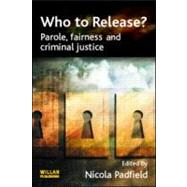- ISBN: 9781843922278 | 1843922274
- Cover: Hardcover
- Copyright: 4/1/2007
This book is about the decision-making processes which result in the release of serious offenders back into 'the community'. It has become an increasingly high-profile issue amongst both public and the media, and raises a number of important concerns and questions. Are too many offenders being released, or is it a question of inadequate supervision on release? Or should we learn to live with the uncomfortable fact that some offenders will unpredictably re-offend?At the same time, the number of ex-prisoners in the community who are recalled to prison, very often simply because they are causing their supervisors significant concern and not because they have re-offended, is at a record high. Are those responsible for recall in fact being too cautious? Is the Parole Board unduly cautious? Or do many of the problems lie not with individual decision-makers but with the 'system'?This book addresses these questions, and explores the changing role of the Parole Board across the range of its responsibilities, including the prediction of risk and deciding on the release (or continued detention) of the growing number of recalled prisoners and of those subject to indeterminate sentences. In doing so it aims to rectify the lack of attention given-by lawyers, academics and practitioners to ''back door sentencing' (where the real length of a sentence is decided by those who take the decision to release) compared to 'front door sentencing' (decisions taken by judges or magistrates in court).Particular attention is given to the important changes to the early release scheme, and therefore to the role and functions of the Parole Board, in the Criminal Justice Act 2003. The contributors approach the subject from a wide range of perspectives-as academics, practitioners, lawyers and psychologists amongst others.






